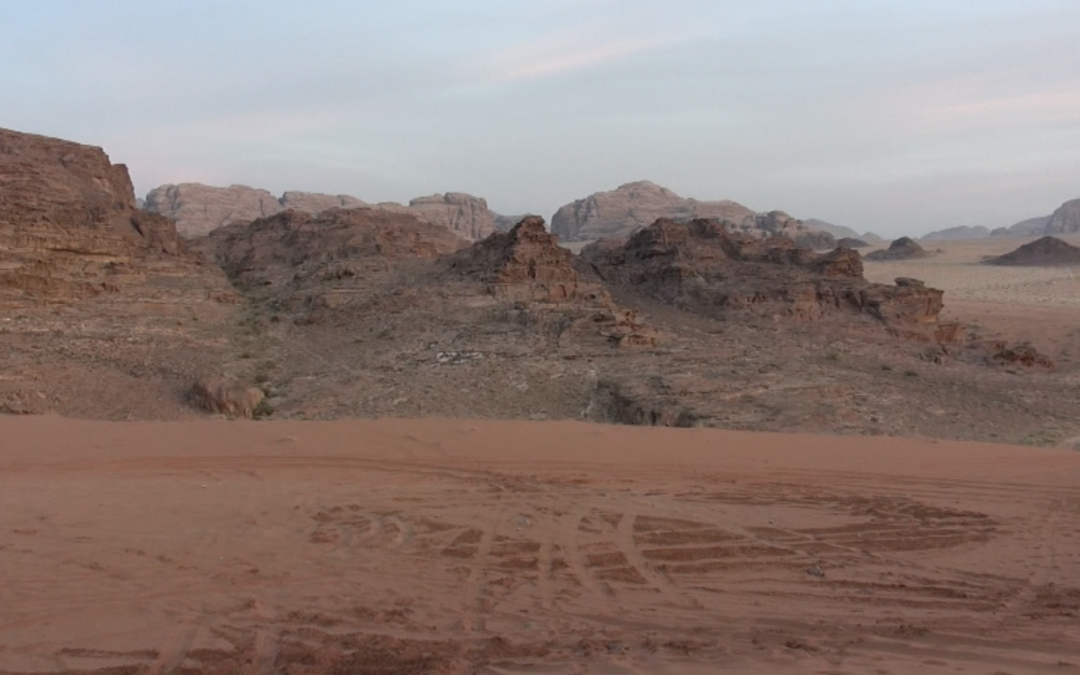When I first arrived in Wadi Rum several years ago, I had only recently visited several of Utah’s storied national parks: Grand Escalante, Capitol Reef, Canyonlands, and Arches. Like those places Wadi Rum is a collection of rock formations in a desert. More of the same? Not at all! Like each of those American parks, Wadi Rum has a personality of its own. As we near the end of the quarter, I will pick out a few themes in our course and apply them to several parks in the Middle East and Britain. And so here is Wadi Rum….
Park Beauty: Places that Grab You
After visiting the park I began a Facebook post about the park with this statement: “Until last night at Wadi Rum, Jordan, I thought I had seen every kind of beauty the earth has to offer….” But I was astonished by Wadi Rum. The beauty of this region of southern Jordan, near the border with Saudi Arabia, quite simply surprised me. I have since thought of Ruth Kirk, in Episode Four of our National Parks film, describing the impact on her of the Grand Canyon. I particularly like the way she describes being drawn to the canyon in spite of herself. Here is what she said: The best thing to do at the Grand Canyon is to float the river. Because then you have time to idle back your soul to that great vastness and that great timelessness…. The first time I floated the river, I almost was puzzled and didn’t like the fact that I was so awestruck. So why should the Grand Canyon be grabbing me so hard? But it does. It’s an amazing place when you can really experience it. Not look at it, but experience it. Be part of it. Hear the constancy of the river’s flow. Maybe that constancy is a part of it, that there’s something bigger than yourself…. In a variety of ways, we have encountered folks this quarter who found something magical in the wilderness. If we have been fortunate, we ourselves my have experienced this spiritual quality of nature. But those feelings are not guaranteed just because we visit a park. In our film and readings this quarter we have met men and women who had trouble finding that sublimity. Think of Margaret Gehrke camped in one part of Glacier National Park, where the crowds kept her from the experience she hoped for. Then she and her husband moved to another part of the park and found the “peace” they sought. — In a humorous essay, Patrick McManus greatly exaggerated this elusiveness by describing parks as covered in trash. (“Where’s the Park, Papa?”) In the same spirit Ruth Kirk, tells us that the Grand Canyon simply “grabbed her” in spite of herself. She was “awestruck” with an encounter with something unexpected, something greater than herself. That is how I felt this past Friday evening, when I arrived by jeep at the top of a sand dune, where my friends and I would watch the sun set over Wadi Rum. If I were trying to emulate John Muir, I would search for words to describe the scene. But I have the luxury of a camera to talk for me.
Here is Wadi Rum at sunset:
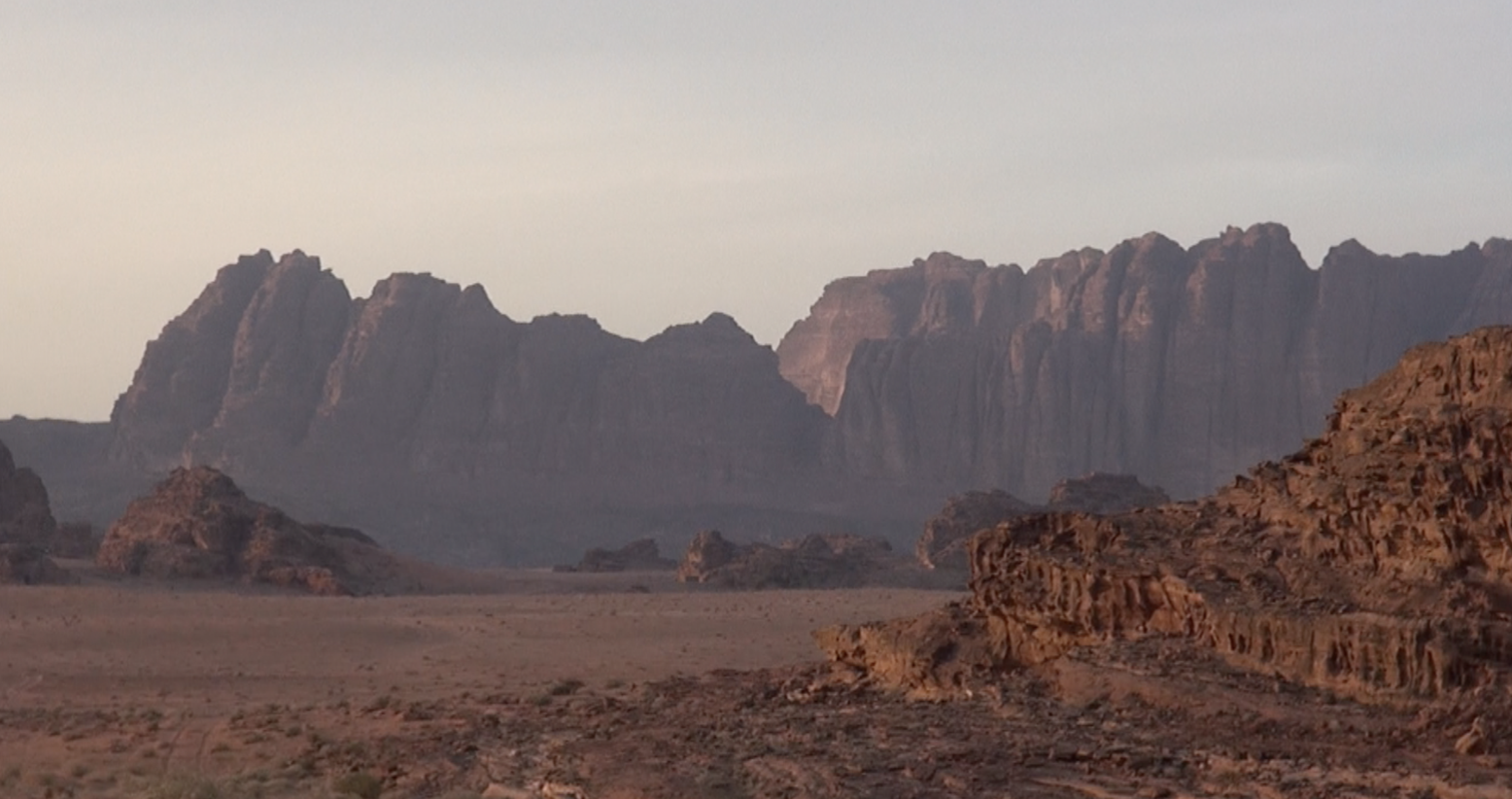
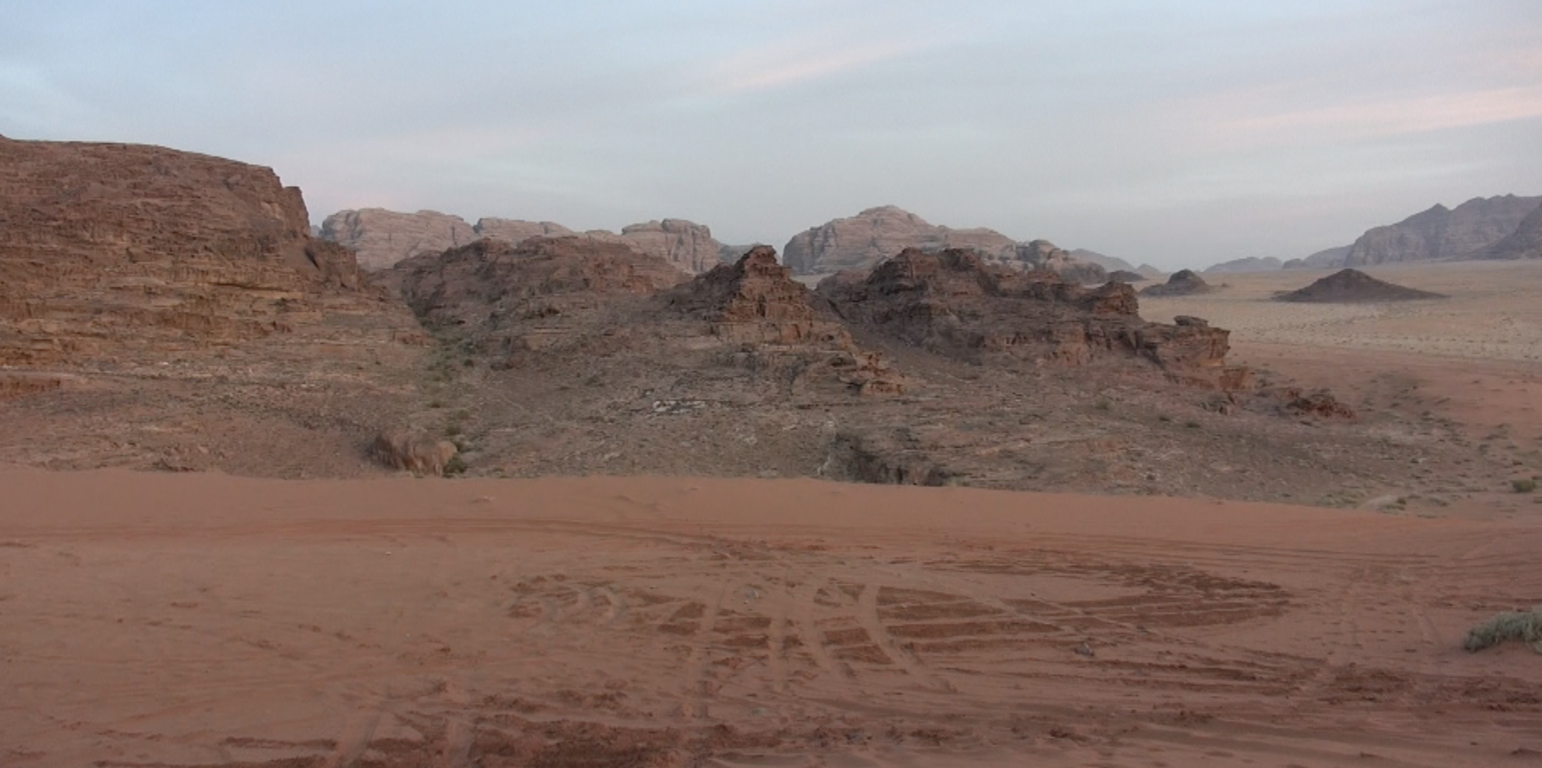
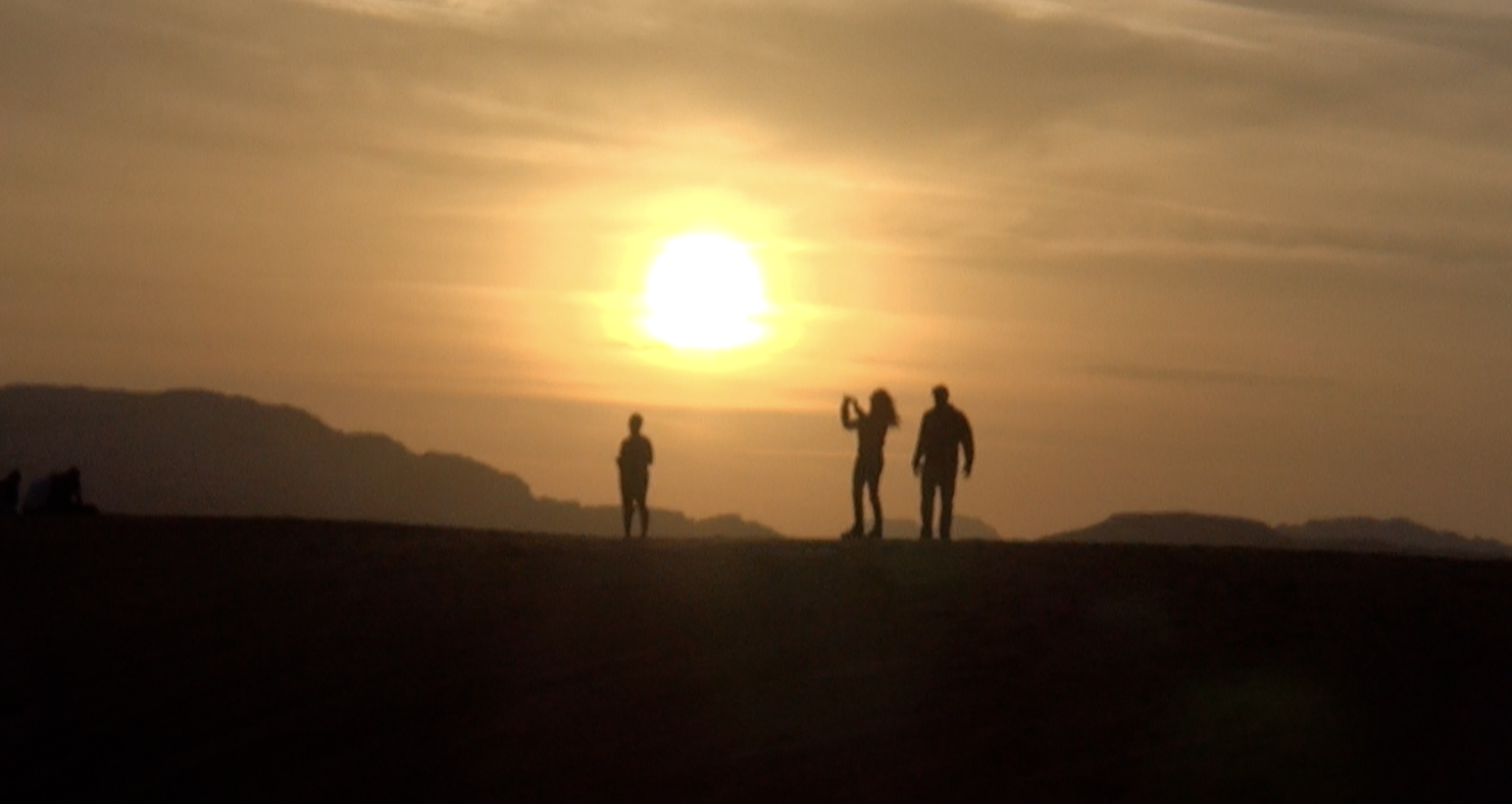
So Wadi Rum, in the Kingdom of Jordan, has become one of those places that inspires me with awe; it is a place that “grabs me.” Will I ever get back there? Perhaps not: it is a long, long way from Cheney, Washington.
But I am glad to know that it xists and to have experienced its beauty.
Park-Friendly Lodging
We have talked a fair amount this quarter about different kinds of lodging in the parks. Long ago in Yellowstone there was the “Wylie Way” — guided tent camping as an alternative to expensive lodging. In Yosemite we encountered Hutchings House with rooms partitioned by sheets. We learned about park appropriate grand lodges, and “gateway communities” with every kind of modern hotel and motel.
That said, my lodging inn Wadi Rum may have been the most park appropriate I have ever seen. Our Bedouin guide-driver and his family run an encampment of tents in the desert beside a cliff that must loom 500 feet overhead — arguably a kind of “glamping,” but with a strong feeling of authentic local culture. Our host and staff cooked an amazing meal in a deep pit beside a tent-dining room. Again, I’ll let some pictures do the talking.
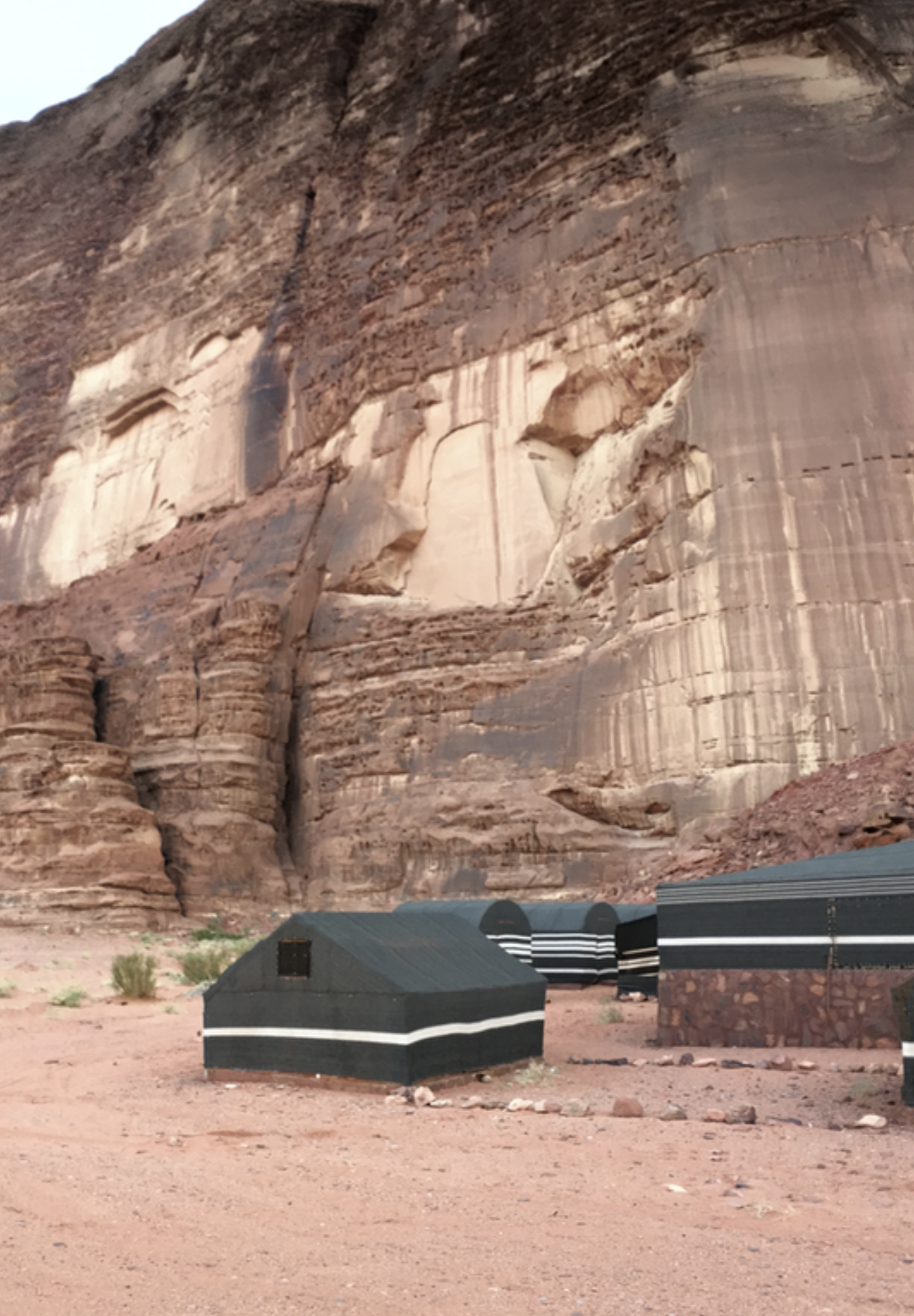
My tent is the one in the foreground on the left in the image above. Here is what it looked like inside. As you can see, it was not the sort of easily moveable tent the Bedouins would have taken from place to place in the desert only a few decades ago — there was even an electric light. But the textiles on the walls and ceiling nurtured a sense of tradition. (And to tell the truth, I did not mind having that light!)
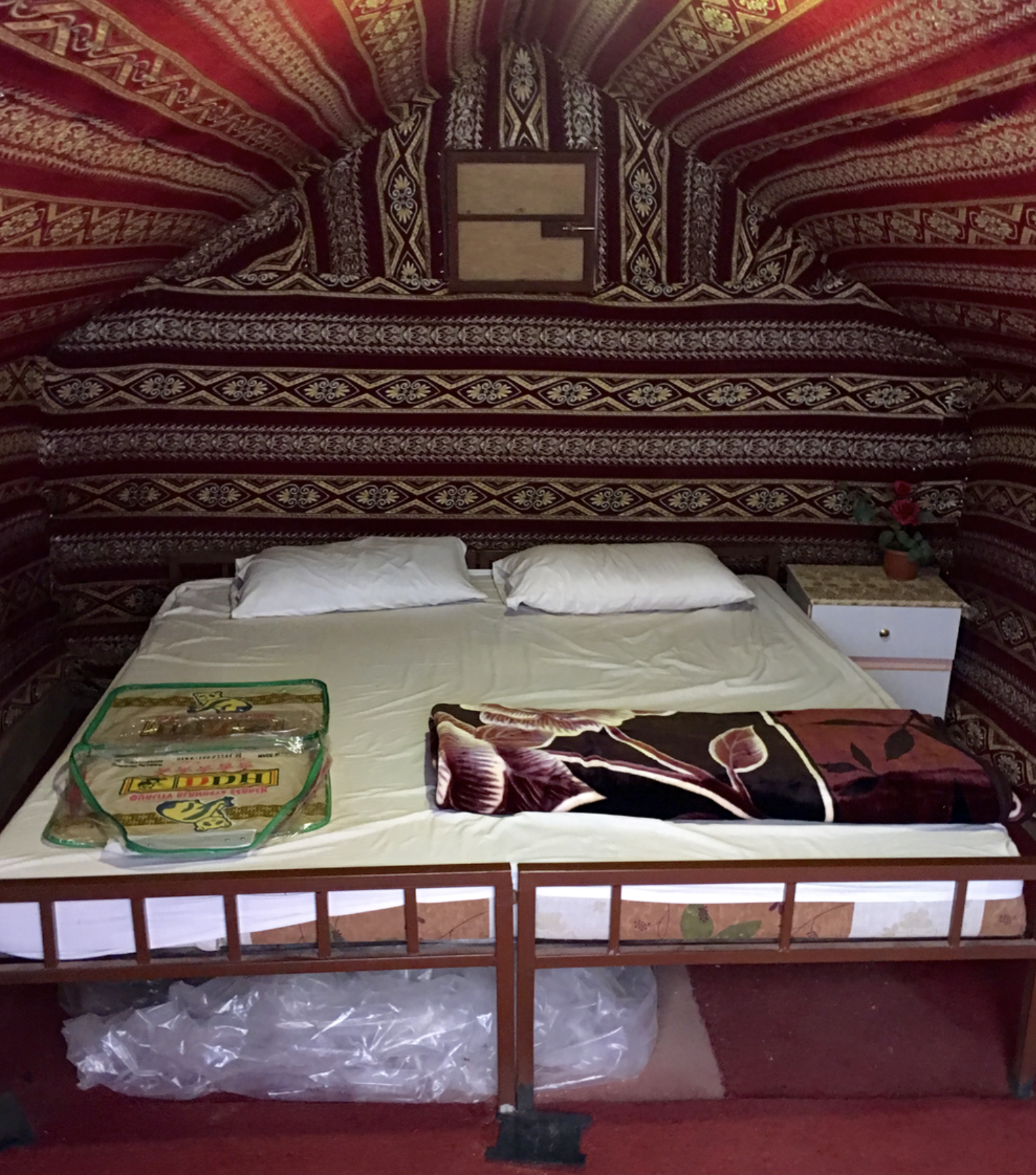
I would like to be able to recreate in words more fully the atmosphere of our encampment — the friendliness, the pleasure in our mingling of cultures. Perhaps this little video will help. After dinner we four Americans and our Bedouin guide relaxed beside a fire and smoked apple-flavored tobacco from a traditional hookah — no hallucinogenics, by the way! We began comparing the ways that we imitated animal sounds in our separate cultures. Here is that scene:
Placing my Wadi Rum lodging in the context of our National Parks course, I am impressed that it is about as “authentic” a place a person could encounter in terms of rounding out a complete park experience: the people and lodging are indigenous to the place, and they have lived here for centuries. In adjusting to tourism, the Bedouin have not become mere stereotypes of their former selves.
What are Those Goats Doing in Wadi Rum?!
Last week I posted a Fireside Talk on a seemingly-out-of-place cattle drive across Capitol Reef national park. In Wadi Rum, at the top of a sand dune, I spotted a flock of goats wandering across the landscape, browsing for food. Let’s have a look at them and then discuss what we are seeing:
Goats at Wadi Rum
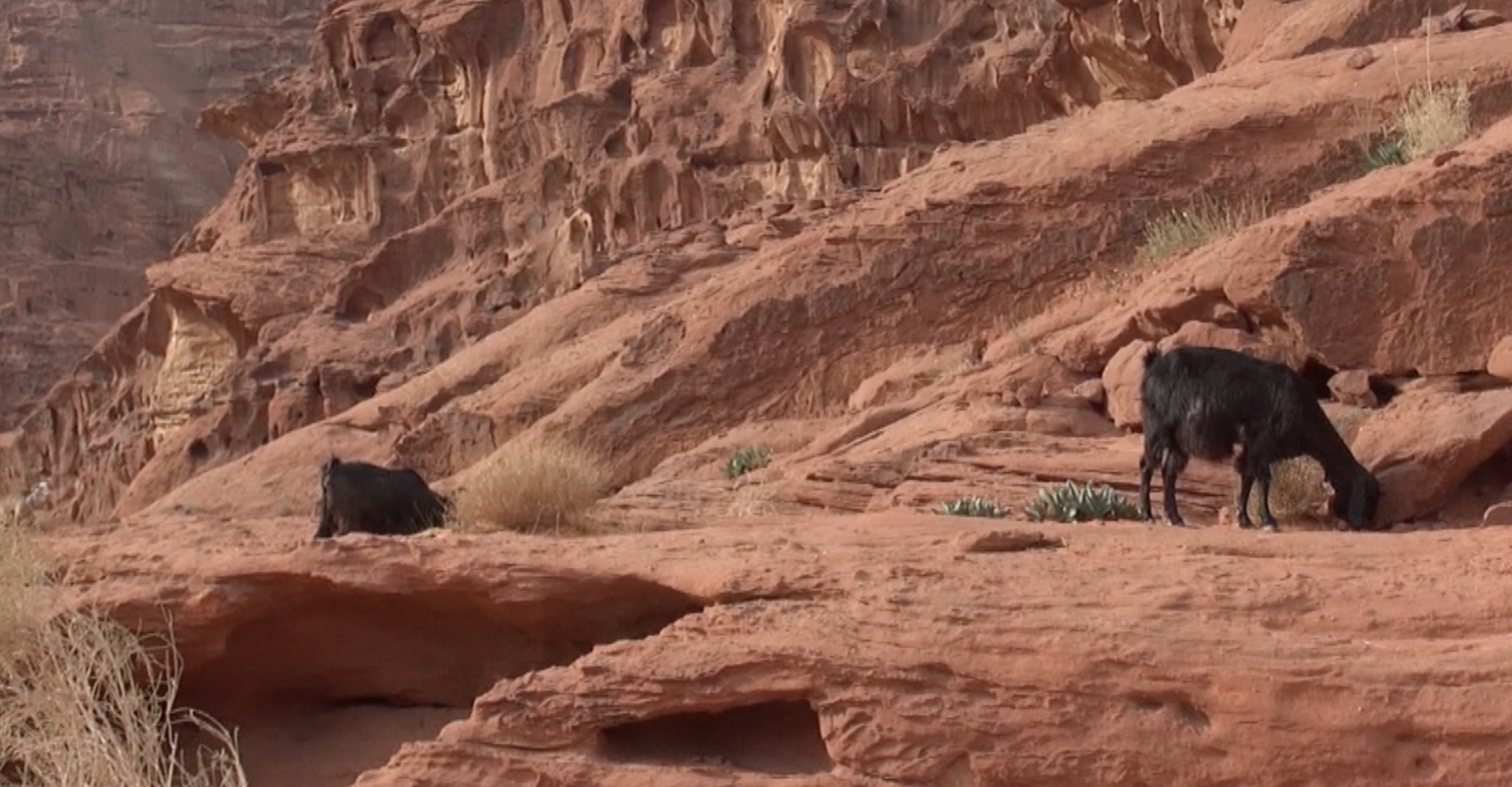
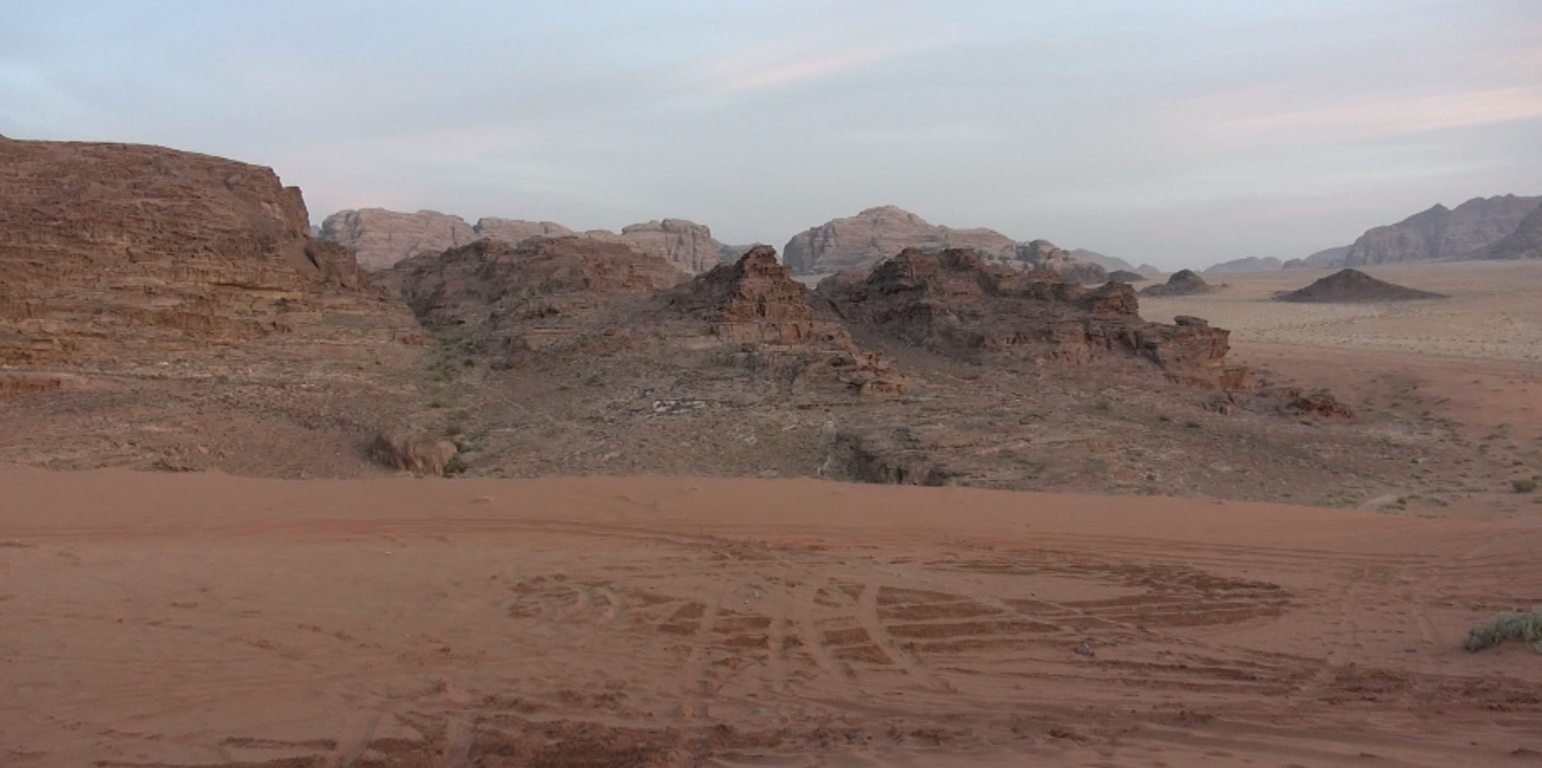
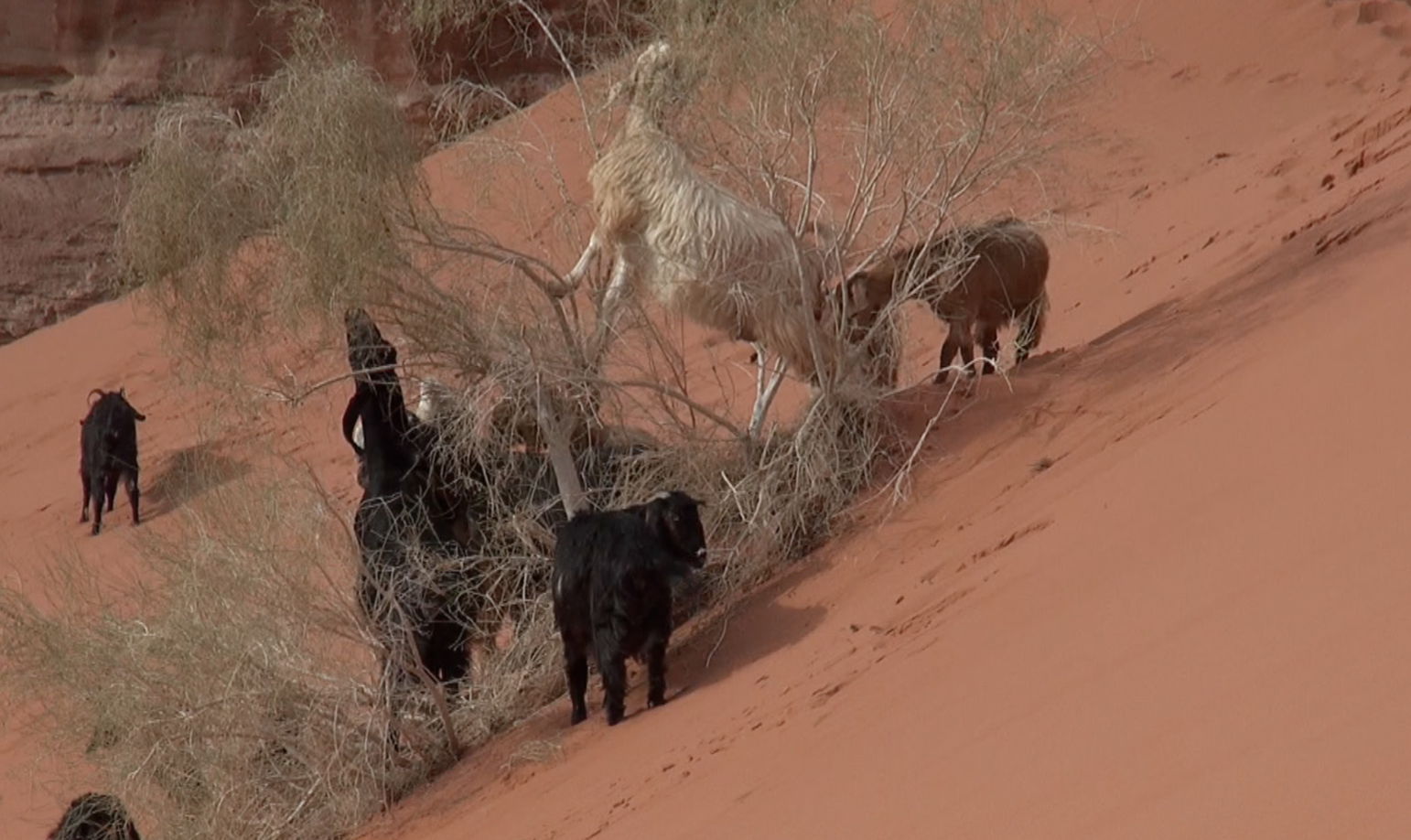
The goats had ambled out of a canyon, then they spread out over sand dune and cliffs to find their favorite sprouts, then ambled back up the canyon. They had no herder or dog to guide them. They just wandered about as if they owned the place. And in a sense they did. I learned later that they had an owner and a home, but that during the day they just roamed the desert on their own, finding food.
So to return to the question, did they belong there? Were they intruders like the turkeys at Capitol Reef, or perhaps legacy inhabitants like the orchards in the same park? I would say that they were neither, but another kind of park critter entirely. Just as I had seen enduring indigenous culture in the Bedouin encampment, the goats were a part of that culture. Unlike the cattle at Capitol Reef, they left the park every night, returning home to their masters. Some of those masters were now guides in the park.
To me, the take away for us students of the parks within a world wide framework is this: Wadi Rum furnishes another example of a place with a certain geological and cultural cohesiveness. The jeeps in which we travelled the desert and the encampments with flush toilets did not diminish the genuine authenticity of the place.
Somehow, they too “honored the landscape.”

